The fact that so few E9 CSL owners seem prepared to get out and use their cars as BMW originally intended, is a source of increasing frustration for John Wilkinson. He’s been in the CSL-owing fold for more than 30 years and, during that time, has watched with something approaching dismay as the model’s climb towards iconic status has effectively driven so many owners off the road and track.

Undoubtedly, the dramatic increase in value of these cars has been another factor in this growing tendency to molly-coddle the model, but John’s view is very much that the CSL is a car to be driven, and driven enthusiastically.
NO FEAR!
He’s also not afraid to deviate from the standard specification, as long as it looks right, and has no real fears about what effects this might have on overall value. His straightforward outlook is based on the premise that he won’t ever be selling his CSL which, in effect, makes its value a secondary issue.
Now, while I can appreciate that playing fast and loose with the standard spec of what’s become such a rare and collectable vehicle, will set teeth gnashing across the BMW establishment, John is in no doubt that his car is better now – in all respects – than it ever was in its original form. What’s more, the modifications he’s made have been driven by his desire to make the car more suited to his driving preferences. As we’ll discover, everything that’s been done to this CSL has been triggered by practical, realworld driving experiences.
But the CSL you see here doesn’t represent John’s first taste of BMW ownership; that came way back in the early 1970s. Following years of increasing reliability and warranty-related annoyance, his ever-tightening loyalty to MG finally snapped. After a succession of models, including a TA, J2 and an MGB V8, he jumped ships and bought a 1971 2002 Tii. There then followed – in quick succession – a 320 and a 323i, after which he was well and truly hooked.
POWER PLAY
During the early 1980s, BMW launched the E12 5 Series, and with it came the 535i version. This model – more specifically, its engine – piqued John’s interest and, once he’d read a contemporary road test suggesting that the motor ‘had enough power for the most blood-thirsty pilot,’ he knew he had to have one. So it was that he became the proud owner of a 1981 535i Mk1 E12.

“I absolutely loved it from day one,” he remembered with a smile. “I started taking it to a few track days and was amazed how well it did. It was a really fantastic car!” Then, a few years later, in 1986, John discovered that a friend of his was selling his 1972 E9 3.0 CSL; a car that he’d been using successfully in racing and hill climbs. “I couldn’t believe that he was thinking about selling – I think finances were tight – so when he told me it was on the market for £3,000, I jumped at it.”
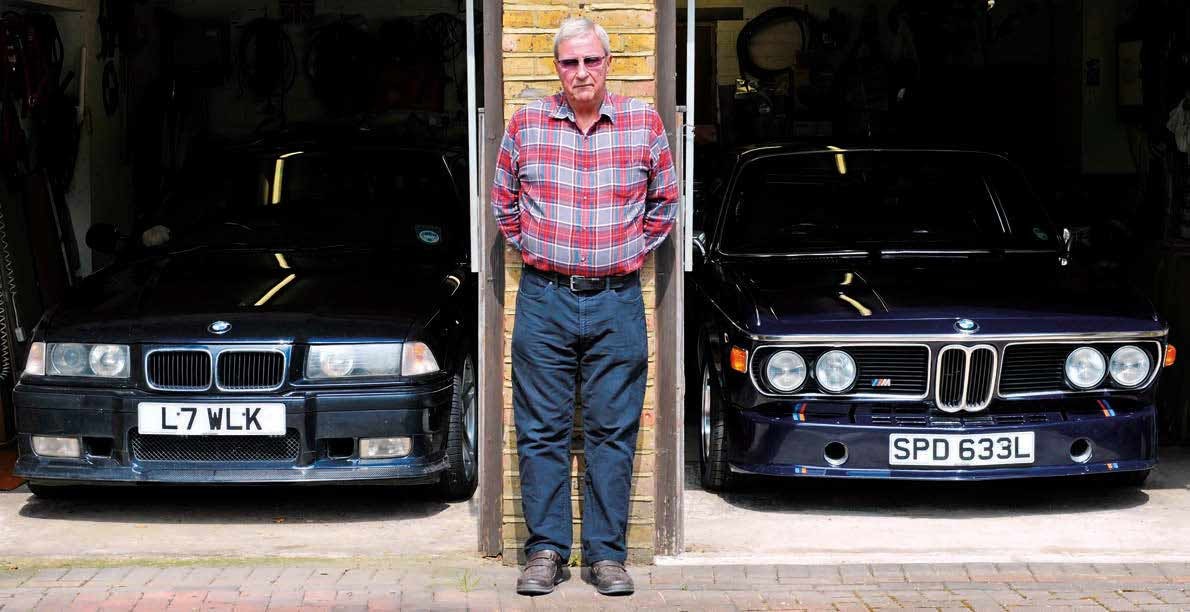
By that stage, the CSL was in pretty poor condition, as John recalls. “There was a lot of rust in the sills, floorpans and inner wings. My friend had been using it purely as a track car, so hadn’t really worried about looking after it as you would a road car. Looking back, it was a lot worse than I’d been expecting.
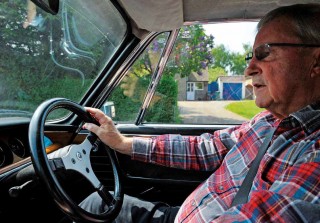
“I remember that when I first started driving it, I was aware of an odd whooshing noise, that seemed to happen every time I braked or accelerated. Eventually I realised the cause; it was about two gallons of water sloshing backwards and forwards in the passenger footwell! Nevetheless, I loved it from the moment I bought it, and that close affection has remained to this day.”
DAILY DRIVER
John’s initial intention had been to get as much use out of the CSL as he could, by running it as his everyday car. So, after the worst of the corrosion had been put right, and the vehicle was structurally sound again, that’s exactly what happened.
But, it wasn’t long before he began hankering after more performance. “My thoughts wandered back to my beloved 535i, and I began wondering about the possibility of swapping the CSL’s 3.0-litre straight-six for the more gutsy, almost identical to look at, 3.5-litre unit.

“Then, coincidentally, a mechanic friend of mine mentioned that he’d come across the perfect engine, and offered to fit it for me. It was an obvious thing to do, as far as I was concerned, although, as the power increase was only about 20bhp, I decided to work-in a few other tweaks as well.
“These included a slightly ‘hotter’ camshaft, a reworked exhaust system and a revised engine control unit, and the upshot was a claimed 260bhp. I also upgraded the front and rear brakes and modified the suspension.” But even at 260bhp, as John is the first to admit, it’s not a powerful car by modern day standards, especially considering its weight. After all, you can buy a pint-sized Renault Clio with 276bhp, which weighs a fraction of the CSL! But, in some respects, as John points out, “The CSL has become a victim of its own image, in terms of how its performance is regarded. People fondly imagine that it’s a much faster car than it is. In reality, it’s not that fast in standard form, especially nowadays. When new, the top speed was 137mph and the 0-60mph sprint took about 7.5 seconds, which is slower than many of today’s hot hatches.”
FLEXIBLE FRIEND
John continued running his modified CSL as a road car for another seven or eight years, and loved every minute of it, but then came a bit of an eye-opener. “One day, as I was negotiating a hump-backed bridge, one of the doors flew open, which was something of a shock, I can tell you! Evidently there were some serious structural problems if the body was able to flex that much.”
A preliminary investigation revealed that things underneath had deteriorated quite badly again and, this time, John decided to entrust the renovation to a friend of a friend. With the work underway, his first visit to the workshop coincided with the sills just having been removed.
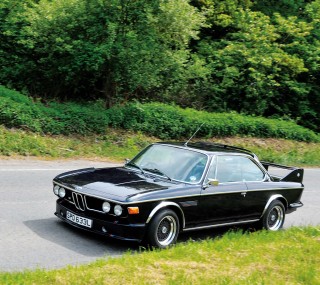
He explained: “The car was sitting on a pair of railway sleepers and, as I watched, the chap reached underneath and, with alarming ease, pulled out a tangled mass of rusty metal and handed it to me. I was aghast to realise that it was what remains of the driver’s side lower seatbelt mounting! “When I returned a few weeks later to check on progress, the car had been fitted with new sills, beautifully welded into place along their top and bottom edges. However, when I asked what the sills were attached to at each end, I was met with a blank stare. It transpired that they weren’t connected to anything! So, after a frank exchange of views, we agreed on a way forward, and the vital strength was built back into the car.
OUT ON TOUR
With the car back on the road, in 1990 John discovered an event called Les Circuites; an independently-organised continental tour of racing circuits that was open to all. Each 10-day trip included track days at five or six race tracks across Europe, and this format was exactly what John had been looking for. But, with each tour necessitating a couple of thousand miles of road driving – not to mention the mechanical rigours associated with a handful of track days in quick succession – vehicle condition and reliability were going to be key requirements. Unfortunately, things didn’t get off to a great start; John’s engine blew its head gasket at an early stage of the first trip, while in Holland. He spent the rest of that tour topping-up the water, nursing the engine and quietly vowing to himself that he’d get things sorted for the next one.
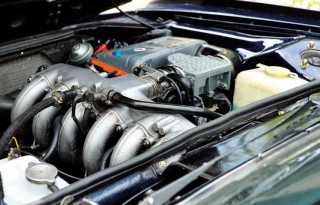
Rather typically, the necessary rectification work turned into another, pretty major engineering session, this time involving the fitting of an engine block, piston set and crankshaft, all supplied new from BMW. Thankfully, by this time, he’d established a fruitful link with Mark McLennan at MJF Engineering in Dorking (tel: 01306 713232); an experienced, BMW-trained technician and all-round engineering guru. So, at last, the CSL was getting the quality of care it truly deserved.
The engine components were switched, and were followed under the bonnet by a brand new cylinder head. Now, to all intents and purposes, the car is powered by a 3.5- litre engine that’s covered just 30,000 miles. Other mods carried out include the fitting of Recaro front seats, a BMW works racing steering wheel, a Batmobile boot lid spoiler assembly and roof spoiler, larger road wheels (15in). Under the surface, the car has been fitted with a new, five-speed, close-ratio gearbox from an E30 M3.
GREAT PERFORMER
As far as John is concerned, he believes that his CSL is now just about as good as it can possibly be, for a road car. And, speaking from my own experience, it certainly accelerates and brakes impressively, handles beautifully and grips with the tenacity of a much newer vehicle. The torque from the larger engine is very usable, and John believes that it makes the car much bettersuited to modern driving conditions. As a preference, he tends to pull away from a standstill in second gear, and the engine copes without a murmur.
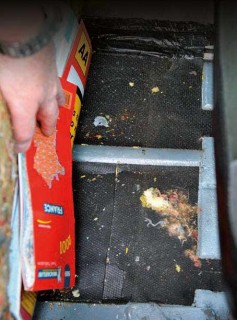
The original front brakes were replaced with a system from a 1991 735i while, at the rear, the standard equipment was swapped for the set-up from a 1991 540i; both considerably heavier cars. John was slightly concerned that over-specifying the brakes might promote wheel lock-up, but that just doesn’t happen thanks, he thinks, to the larger diameter wheels.
The car also benefits from a properly functioning heater, which John says is a rare luxury among CSLs nowadays. From the factory, the control mechanism was riveted to a Bakelite housing behind the dashboard which, with time and use, inevitably fractured and broke, leaving the unit set on ‘hot’. “I was lucky and managed to find a new one of these Bakelite units,” John explained, “and added a strengthening plate around the control mounting, which has worked. So now my heater blows hot and cold, as requested!”
It’s evident that John remains deeply attached to his CSL, and that he still gleans enormous pleasure from the thrill of driving it. He hustles it along with considerable aplomb, and says that it remains the most satisfying to drive of the three BMWs he owns – a 2000 E39 528i Sport and a reengined, 1994 E36 M3. The fact that he still feels this way about a 45-year-old car speaks volumes, both for the appeal of the E9 coupé, and the modifications he’s chosen to make to his.
John has never totalled-up the money spent on his CSL over the years, and doesn’t intend to do so.
Finished in understated Night Blue – Nachtblau – John Wilkinson has owned his cherished CSL for 31 years.
Lifting the rear carpet reveals the top surface of roll cage tubing that’s been welded into the floor. It runs from front to back on both sides of the vehicle as an additional, bodystiffening measure.
1980s Recaro seats are a necessary concession to a bad back. Steering wheel is from a BMW race car.
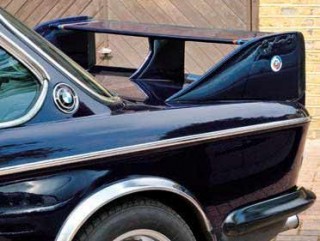
While looking authentic to the casual observer, those ‘in the know’ will spot the 3.5-litre engine that’s at the heart of John’s CSL.
His CSL is now just about as good as it can possibly be, for a road car.
John’s classic stablemates. Despite having a very track-focused E36 M3 and a Sport 528i ‘daily driver’, the 30-year-old CSL remains his favourite to drive.
The larger-than-standard wheels allow for the use of 225/50 R15 tyres. John is a great advocate of Yokohama rubber.
The modifications John’s made to his 1972 E9 CSL make it a breeze to drive, under all conditions.
John’s view is very much that the CSL is a car to be driven, and driven enthusiastically.
There’s no denying the road presence of John Wilkinson’s CSL.
I started taking it to a few track days and was amazed how well it did. It was a fantastic car!
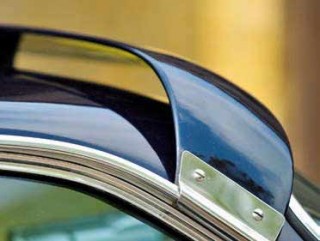
A Batmobile roof spoiler adds another sporting touch. The boot lid wing assembly, with a modified centre support that was built for John out of wood.

Happy days at the Nürburgring!





